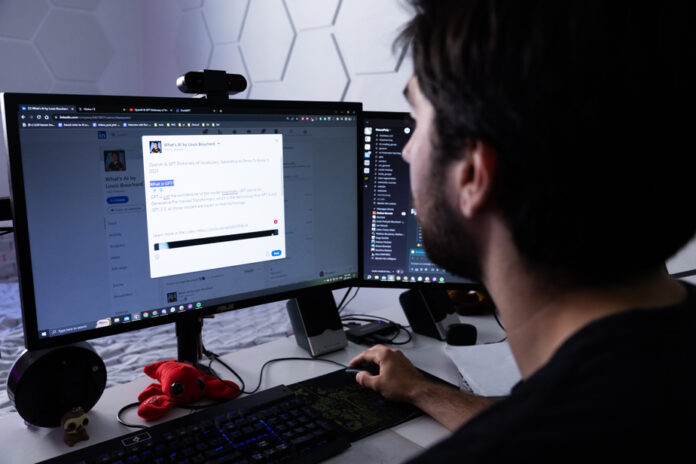Exploding revenues, number of users approaching one billion, well-established influencers, popular content: who would have thought that LinkedIn, this unloved professional social network, would become “cool”? However, it is the label that more and more observers attach to it in the wake of the turmoil of Twitter – now X.
“I think LinkedIn has always been cool, but people are starting to see how cool we actually are. This short message from Tomer Cohen, Chief Product Officer at LinkedIn, was posted on August 23, the day after a Bloomberg Businessweek article titled, “Sorry, LinkedIn Is Now Cool.”
And the New York media is far from being the only one to make this observation. Without fanfare, while competitors like Twitter and Facebook are in crisis, LinkedIn has imposed itself. A surprising turnaround for this network launched in 2003 and acquired by Microsoft in 2016. It was for a long time mainly used for job searching and was open to mockery, with its “professional birthdays” and its incessant invitations sent by pure strangers.
This has not prevented the social network from garnering users and revenues, a trend which has accelerated with the pandemic.
And those subscribers aren’t inactive, as half of Threads’ subscribers became last July. Last spring, LinkedIn announced that its subscribers had shared 41% more content than at the same time in 2021.
Louis-François Bouchard, a doctoral student at Polytechnique Montréal and science popularizer in artificial intelligence (AI), is one of those who have learned to use LinkedIn diligently. “I started my Masters in AI in 2020 and found that the best way to learn was to share my discoveries. And LinkedIn offers stronger, more relevant engagement than Twitter or Instagram. People are in a state of mind where they are ready to learn something interesting. »
He notes that many Twitter or Reddit users find LinkedIn “stubborn”, but persists and signs: “It’s more about helping people, there are start-up founders, people who share what ‘they do. I’ve never had any spam or anything negative, there are no bots you can’t get rid of. »
A well-known figure in the Montreal innovation ecosystem, Alexandre Teodoresco immediately describes himself as “a fan of LinkedIn.” The vice-president of strategic development and innovation of 7 Fingers regularly publishes news from his company, trying to balance fun content and in-depth analysis.
“I go there several times a day. I’m not on Twitter; Facebook, I haven’t been there for years. »
His presence on LinkedIn allows him to “network”, to sell the 7 Doigts, “but indirectly”. Videos showing the works of generative AI, revival of the ninth floor of the Eaton Center, posts on the metaverse are some of the items he has offered recently to his 9805 subscribers.
“It’s not a ‘used tank salesman’ approach, but it’s about positioning yourself. We have to do it authentically. When you define your voice well, you have found your voice. »
He has never had to deal with “trolls” either, even if more difficult debates sometimes arise on his thread. “But even people who disagree with me don’t troll. Let’s say that there is a “truth brigade”, people who will quickly point out an inaccuracy to you, sometimes with details that are not necessary. But it’s in a good atmosphere. »
One of the reasons for this civic behavior is of course the very nature of LinkedIn, which theoretically prevents anonymity and where everyone presents their training and previous jobs. That said, the network acquired by Microsoft is not about to dislodge TikTok or Instagram among young people, said Patrick White, professor of journalism at the School of Media at the University of Quebec in Montreal.
“It’s good to have a cocktail of social networks, and LinkedIn is one of them. It is growing, that’s what I see around me. The algorithm has changed, it’s a lot less confusing. And we see that people have moved on from more unpleasant things like reminders of professional birthdays…”
LinkedIn may be marginally benefiting from the disappearance of Facebook news, White said. “It’s not a big source of traffic for news publishers, but if we go after 2, 3 or 4% of users who were on Facebook, maybe it will stabilize media traffic. »















